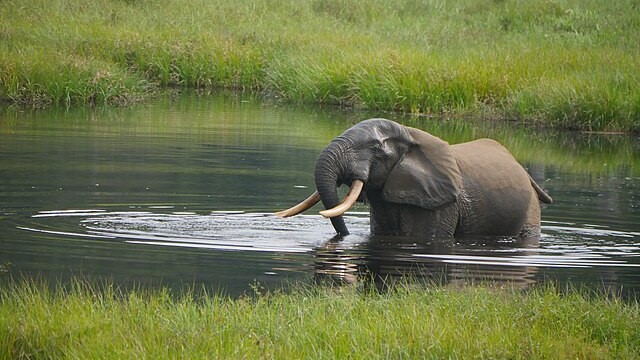In the heart of Central Africa, where the equator cuts through a tapestry of green, the Republic of the Congo conceals one of the world’s most extraordinary wildernesses. Here, ancient rainforests sprawl across the horizon, rivers carve through untouched valleys, and waterfalls roar into mist-filled gorges. For those who seek landscapes that are both rare and raw, this is a land where the wild remains sovereign.
The journey begins in the Congo Basin, the planet’s second-largest rainforest and a biodiversity reserve of global significance. Sunlight filters through the dense canopy in fleeting shards, catching on the iridescence of unseen wings. Orchids cling to moss-darkened branches; deep in the undergrowth, the quiet is punctuated by the distant call of hornbills. To step further in is to enter a realm still ruled by nature’s rhythms—a place of thunderous waterfalls, serpentine rivers, and flora that has evolved in splendid isolation.
The country’s national parks—Odzala-Kokoua and Nouabalé-Ndoki foremost among them—offer a rare intimacy with wildlife. Western lowland gorillas roam here, their silvered backs glinting in forest light, their movements patient and deliberate. Forest elephants tread ancient paths through salt licks and marshes. Chimpanzees, bongos, and elusive antelope species inhabit these same corridors, unseen yet always present. Guided treks, often led by rangers with deep ancestral ties to the land, bring visitors close to these animals without disturbing their fragile habitats.
Far from the forest floor, the Les Chutes de Gola waterfalls announce themselves in a shattering crescendo. Water surges over cliffs in a furious cascade, exploding into clouds of gold-lit spray. Standing before them, it is impossible not to feel the force of the elements—the kind of moment that silences thought and fills the senses entirely.
Beyond the wild, the Republic of the Congo opens into a cultural landscape shaped by centuries of trade, migration, and tradition. Visitors encounter vibrant markets where regional produce—mangoes heavy with juice, fiery peppers, river fish still glistening—reflects the country’s culinary richness. In villages and towns, festivals and ceremonial gatherings showcase music, dance, and oral storytelling, each performance a link in a chain of living heritage.
The dry season, from June to September, offers the best conditions for exploration: animal sightings are plentiful, and forest paths are more easily navigated. Local guides, many trained through community-led conservation programs, provide both ecological insight and cultural connection, ensuring that travel here supports the very environments it seeks to reveal.
The Republic of the Congo remains a destination of rare authenticity. Its beauty is not curated, but untamed; its treasures are not displayed, but discovered. To witness this place is to see the natural world as it once was—and to understand why such landscapes, once lost, can never be replaced.
Sources:
- Malonga, Pierre. Wildlife and Conservation in the Congo Basin. Brazzaville University Press, 2021.
- World Wildlife Fund. “Congo Basin: The World’s Second Largest Rainforest.” WWF Report, 2023.
- United Nations Environment Programme. Biodiversity and Ecosystem Services in Central Africa, 2022.


